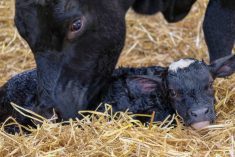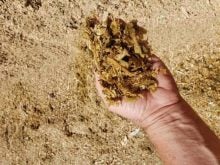High-forage dairy diets have become very popular in the last few years. That’s because many dairy producers feared too much grain was being fed to their high-producing cows, causing digestive upsets and lameness. I have reviewed many of these former high-concentrate diets and agree that many were clearly unacceptable to feed.
Yet I have also examined many new high-forage lactation diets and have found some of them were equally unbalanced. It made me appreciate that all essential nutrients in a dairy diet, regardless of forage content, must work in unison to promote good dry matter intake, exceptional feed digestibility and effective nutrient metabolism, which together underlie all good milk (and milk fat) production.
When I balance dairy lactation diets, I apply a common-sense approach to meet dietary objectives. In my experience, all successful dairy TMRs for lactating dairy cows should contain:
- Lots of effective forage fibre: All my lactation TMRs contain a minimum amount of neutral detergent fibre (NDF) of 27-28 per cent with about 80 per cent of that coming from the forages. I also like to see a chop length of about a half-inch with 15-20 per cent long-stem fibre of 1.5 inches in the entire mix.
- Lots of available energy: A high-producing dairy cow producing 40 kg of milk at 4.0 per cent milk fat requires about 40 Mcal of Nel (net energy of lactation). The rumen microbes will release this dietary energy, largely from the fermentation of forage fibre (carbohydrates) and grain-starch energy.
- Utilize non-fibre carbohydrates: NFC portion of the diet should be limited to 35-37 per cent of the total diet. Starch, which comprises a significant portion of NFC should be targeted at 21-25 per cent of the diet, (DM). I like to utilize starch, mainly from grain corn and barley, while recognizing their different rumen digestablities.
Apply rules to a ration
Read Also

Gentle treatments for pain in the neck
Heading toward year-end, people unknowingly tense up against the cold and busyness, causing neck pain that can often be treated with appropriate support and gentle mobility, athletic therapist Kathlyn Hossack says.
I would assume that these rules would be relatively easy to follow, particularly when building a high-milk-producing dairy diet formulated with an appreciable amount of fibrous and high-energy corn silage. But this is not always the case. Recently, I was presented with a challenge at a 150-cow dairy to balance a high-milk and milk fat lactating TMR.
Its main limiting factor was a corn silage analysis that contained relatively low NDF and high digestibility as well as a starch level of 32.6 per cent and NFC of 47.1 per cent. As a result, the Nel was 1.70 Mcal/kg. In addition, second-cut hay was available, but it had modest NDF and NFC levels. The producer had home feeds of grain corn (no barley), soybean meal, high-fat canola meal, limited amounts of DDGS and bypass palm fat. Lastly, a 300-gram premix which contained essential minerals and vitamins was fed.
The accompanying TMR diet illustrates:
- Corn silage was limited to about 10 kg DM to limit its starch/NFC intake.
- Grain corn was cut back to 3.6 kg to do the same.
- Alfalfa hay raised forage-fibre levels, but its mediocre eNDF and high soluble protein may have reduced its effectiveness.
- Canola meal was limited to curb its vegetable oil intake, and
- Beet pulp was added at 1.5 kg.
In summary, on a dry matter basis the forage/concentrate ratio was 63.5 per cent, eNDF = 22.5 per cent, starch = 23.20 per cent, NFC = 39.40 per cent.
This new dairy diet was fed in the dairy’s free-stall barn for about three weeks before I had a chance to do a barn walk with the producer. It gave us a chance to review and draw some conclusions about its dietary performance. That is to say; milk production slipped (but not significantly) to 39.3 kg and a 4.24 per cent milk fat. When cows went up to the bunk to eat, DMI was consistent 26 kg per head, daily, and when the cows were resting in their stalls, they were actively chewing their cud (healthy rumens).
We concluded that this new high-forage diet was doing an adequate job of supporting good milk production. Yet I still had a wish list in the back of my mind to unlock more dairy performance. This meant adding grass hay and switching out some alfalfa to raise the dietary level of effective fibre, switching to a bag of corn silage that contained less ensiled starch and feeding less palm fat. The funny thing is my mental notes were right in-line with the above points of common sense of all good dairy diets.
















